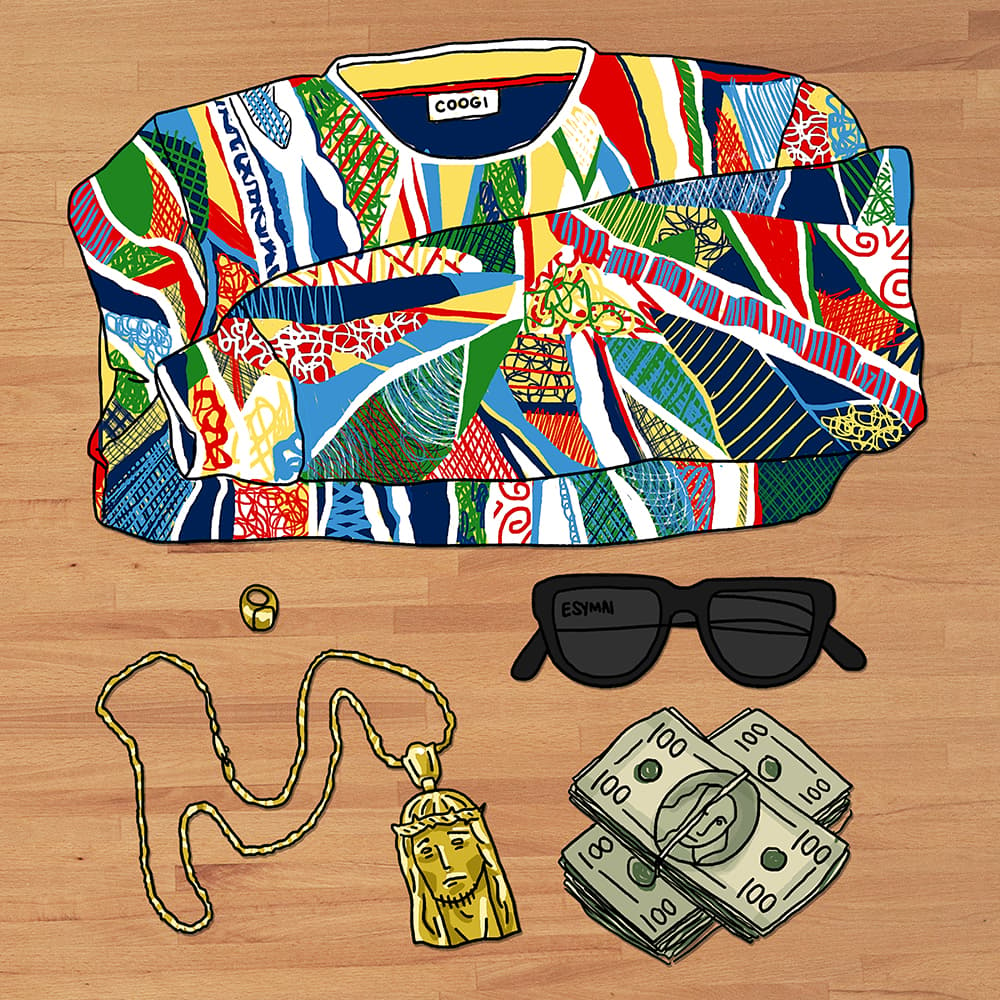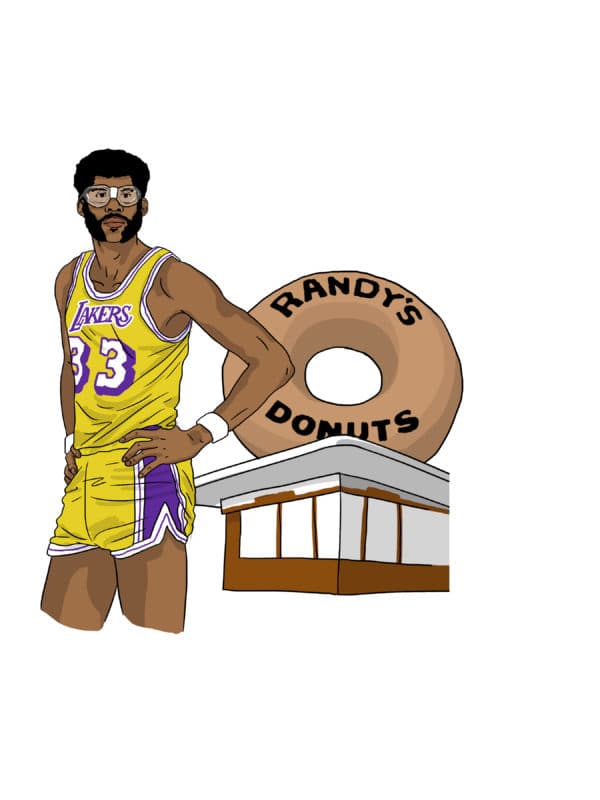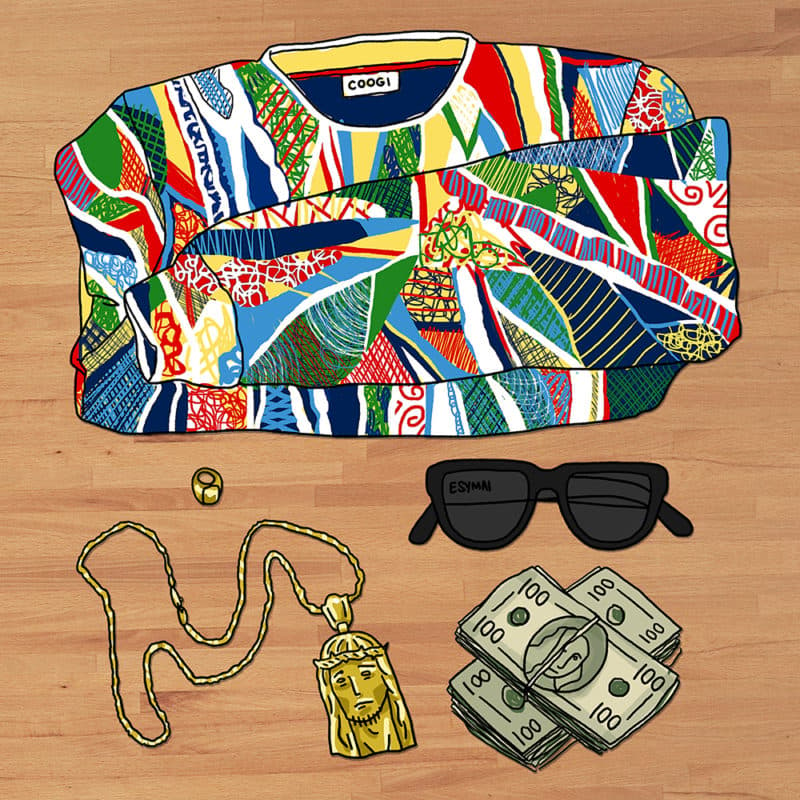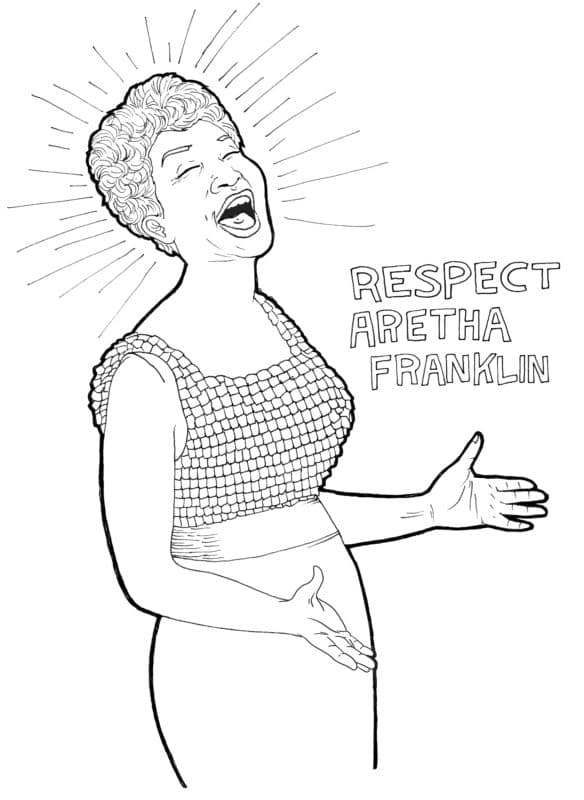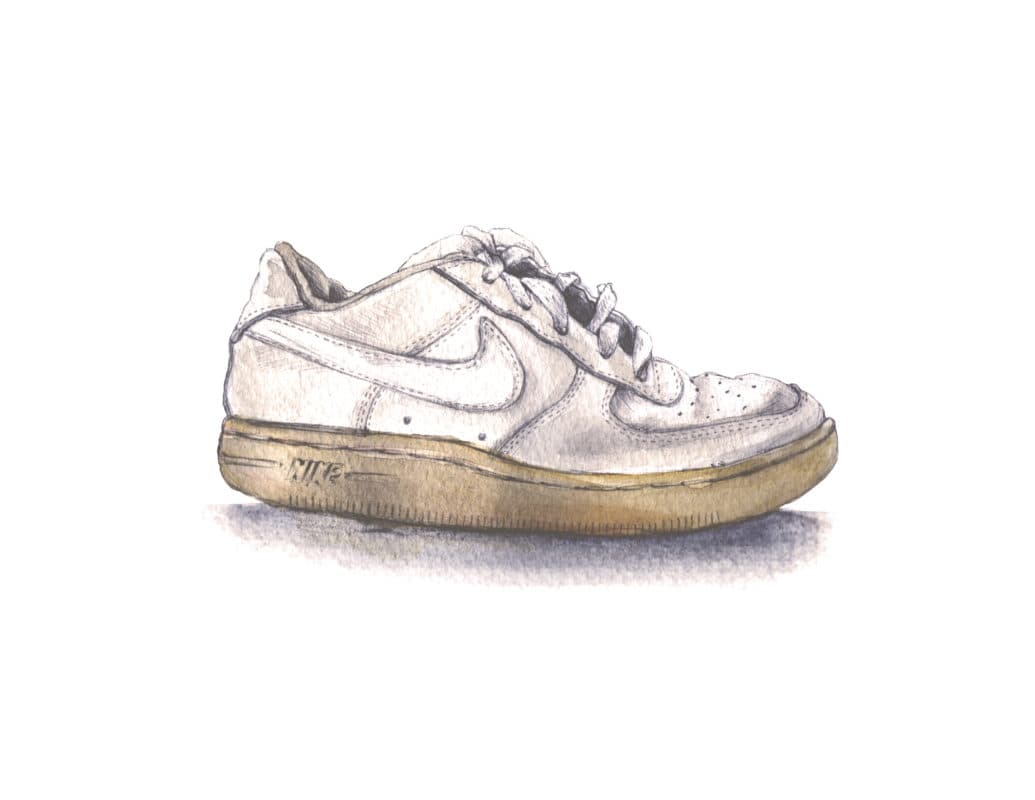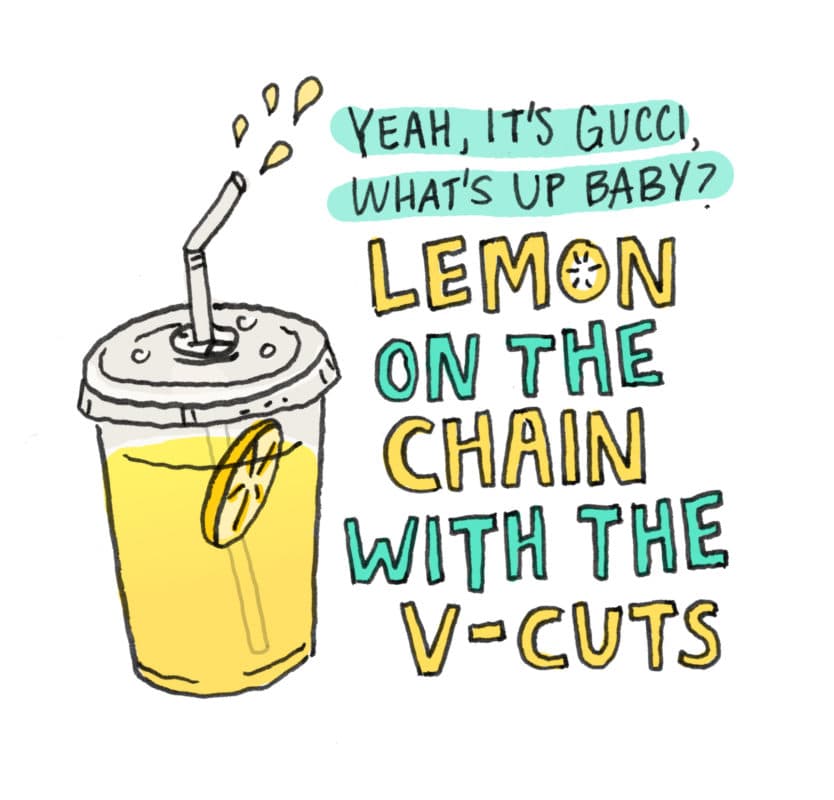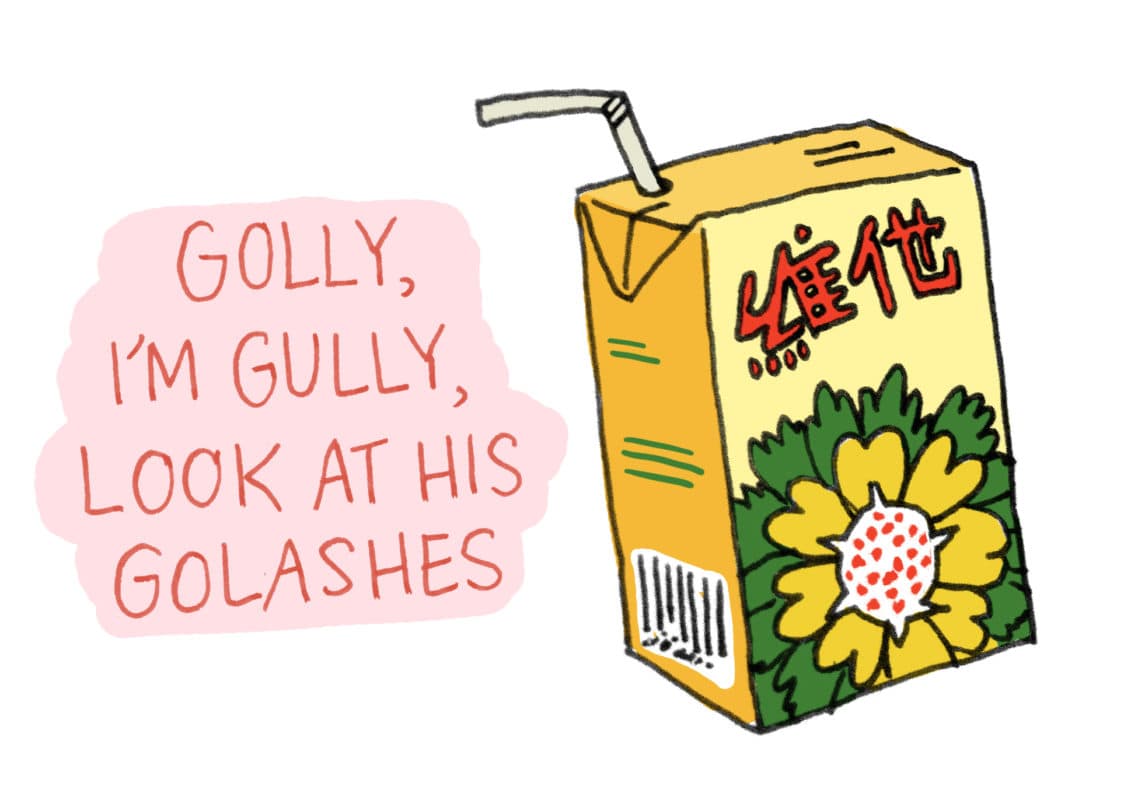No Curator focuses on the most important and cutting edge visual artists who create and draw inspiration from the interconnected cultures of StockX. In this installment of No Curator, illustrator Sophia Chang shares her influences, workflow, and more.
Be sure to check out Sophia Chang’s website and Instagram for more.
The following has been lightly edited for length and clarity.
Pete Forester: So you grew up in Queens. Can you talk about how your childhood influenced your art?
Sophia Chang: I’m an only child, so that had a lot of influence because it was a lot of keeping myself entertained, and I definitely got into a lot of random, weird trouble trying to keep myself entertained. I spent a lot of time on my own. I did grow up with a lot of kids close in age, before I entered the school system. But basically until I was six it was like, “What am I going to do?” My mom would take me window shopping with her a lot of times. So I would be that random kid inside the clothes rack, and someone would be looking through the clothes and then there’s a child in there. That’s me.
My childhood was chaos. Growing up Asian-American, we’re thrown into the system. Not only the education system, but we’re expected to be perfect in everything. All of our family members are perfect. So there’s such a strong emphasis on perfection beginning at such a young age. If you didn’t get good SAT scores, if you weren’t performing in the top tier of your class, then you’re a failure, quite honestly. And so it was very hard growing up because there was always that internal dialogue of not being good enough and the sense of being a failure.
There’s something really interesting there because it’s impossible to be perfect in creativity—when it comes to illustration, you cannot be perfect. Do you think there’s a connection there?
You can always tell what someone does sometimes based on how they carry themselves, right? Like what they do professionally. So salesmen always come off a certain way. When I was in art school, I noticed that illustration majors were a little bit different from graphic design majors, and a little bit different from the architecture people. Fine artists are just like far gone. Graphic designers are also a certain type of specific, but they’re over thinkers, so they overthink more than they actually need to.
Illustrators are kind of somewhere in between all of that. Especially if you do commercial illustration, you’re definitely a little bit more open to mistakes. But for me, at least, as far as like my approach, I was, and still am, very intentional with the mistakes. I celebrate the little things. So it’d be like, I kind of like this, I’m just going to leave it and let’s just see where it goes. That’s also just part of me as a person.
I think part of it is just my way of dealing with stress, too. So I don’t get too bogged down with things because in my early years, when I first started, I would worry about everything. Worrying about everything finally pushed me past a certain threshold and I just became like, “I don’t give a fuck. I don’t care anymore.” I don’t need to physically, emotionally care as much. I was able to create distance for myself and I think maybe sometimes you have to push yourself to that threshold. And I became aware of the things that I’m not in control of and realized that’s why I should stop caring about all the little things.
Did you find that your work changed once you let go?
In different ways. But I still always care about my work. I was in Hawaii for the POW! WOW! mural festival and one of my friends asked me, “How did you get to the style that you have?” Thinking about it brought me back to my college days. It was difficult to create a style because a bar had been set that was based on what [Parsons] said was the best. As a student, I saw that and thought, “Oh, this is the best. I’m really different from the best and I don’t really know now to get there.” As I started applying for internships and stuff I would show my portfolio to my friends and it would look just like else’s stuff because that was what we’ve been taught.
But it was the sketches and the random stuff that I used to make that portfolio that led to my style today. Basically, I let go and I was just really lazy. I just got really lazy and I thought, “You know what, I know I have the skill set.” If I wanted to do a watercolor, I did a watercolor. It’s not really my style, but I can do it. I can do oil painting, acrylic painting, whatever. I’ve been traditionally trained and I can handle different styles and mediums. But, I choose not to, because I’m lazy. It takes a lot of time to mix paints and colors, and wait for it to dry. So the style that I have now, that’s just me being really lazy.
But I’ve also been inspired by agency life, marketing, advertising, commercial thinking, and what the client responds to. Everything around me I find some kind of inspiration, too. Stuff like Chipotle and the brown bag your burrito comes in with all the illustrations on it. Industrial sounds, too: garbage trucks, street cleaners, buses. I draw inspiration from so many different angles. And a lot of it is just me being lazy. I think, “I can just create with a Sharpie.” I don’t do that, but I think like that.
Sophia Chang (b. Queens)
Kareem, 2019
Digital
Los Angeles
Image courtesy of the artist.
See more from Sophia Chang on her Instagram.
Sophia Chang (b. Queens)
Howtobun, 2013
Digital
New York City
Image courtesy of the artist.
See more from Sophia Chang on her Instagram.
Sophia Chang (b. Queens)
Raekwon, 2012
Digital
New York City
Image courtesy of the artist.
See more from Sophia Chang on her Instagram.
Sophia Chang (b. Queens)
Biggie Smalls, 2013
Digital
New York City
Image courtesy of the artist.
See more from Sophia Chang on her Instagram.
Sophia Chang (b. Queens)
Aretha Franklin, 2011
Pen
New York City
Image courtesy of the artist.
See more from Sophia Chang on her Instagram.
Sophia Chang (b. Queens)
Air Force 1, 2011
Watercolor and pencil
New York City
Image courtesy of the artist.
Featured Sneaker: Nike Air Force 1
See more from Sophia Chang on her Instagram.
Sophia Chang (b. Queens)
Lemonade, 2011
Part of “Baohaus”
Pen and digital
New York City
Image courtesy of the artist.
See more from Sophia Chang on her Instagram.
Sophia Chang (b. Queens)
Gully Vitasoy, 2011
Part of “Baohaus”
Pen and digital
New York City
Image courtesy of the artist.
See more from Sophia Chang on her Instagram.
Sophia Chang (b. Queens)
BRRR, 2011
Part of “Baohaus”
Pen and digital
New York City
Image courtesy of the artist.
See more from Sophia Chang on her Instagram.
I had this epiphany two or three weeks ago and thinking about my process. My whole process has always been, “Is this the most effective way or is this the best way to do it?” And I didn’t realize until like two weeks ago when I was thinking about method actors and how frustrating they are to me. I was like, maybe they’re just doing the things that they’re doing because that’s the way they want to do them. And I’m wondering if you’re lazy or is that just the way you want to do it, the way you want to work?
I’m kind of a lazy person, so that’s probably the way I want to do it. Because my approach is like, I can make a cool oil painting, it’ll take me a very long time-
And maybe you don’t want to invest that time . . .
Yeah, what I mean by time is like if I’m not trying to be perfect then I can invest my time and skill into things I can turn around in a much shorter amount of time. If I can do everything fast, well, effectively, and efficiently, then I have more time to sit around and watch Hulu. That’s literally it. I work so that I can do other things.
So you can enjoy your fucking life!
So I can enjoy my life, and sit around and do what I want to do.
Is there a message behind your work? Are you trying to sort of express something? Or speak towards something?
No, not so much. But I guess there’s a difference between my personal work and my corporate work.
For my corporate work, I see myself as a vessel for the client to help carry through their messaging. And so whether a client’s trying to promote a product or a campaign, or whatever, I try to make sure I integrate my style with the client’s desired messaging that speaks to their audience. My work will push the message of that specific campaign and product. And if it’s consumer facing, make sure it’s nice and pretty.
If I have a personal or internal message or expression, it’s creating something to actually have people stop in their tracks. Whether it’s a subway ad or pair of sneakers that makes people stop and be like, “That’s cool,” then that’s a win for me.
Do you have a particular audience in mind for your personal work?
My personal work is just that, my personal work. I do it because I want to. When I was growing up, Air Force Ones and Uptowns were really popular. They’re also pretty expensive for a 13-year-old in junior high school. I finally got my first pair when I was a freshman or sophomore in high school. So I decided to draw my first pair of Air Force Ones because they were sneakers I always really wanted and it was so hard for me to get a pair and when I did it was such a big deal. They’re a representation of my youth and I drew them all old and crinkly and the sole was yellowed. It wasn’t gross to me, it looked like a piece of art.
I initially drew them just for me. I thought, “I have this skill, why not just make it?” And then I actually sold it as a print and it became popular. Someone got my print tattooed on their forearm because the shoe meant so much to them. It felt really good to know that my work resonated with other people. So the personal work is just because I want to, but it also connects with a wider audience.


